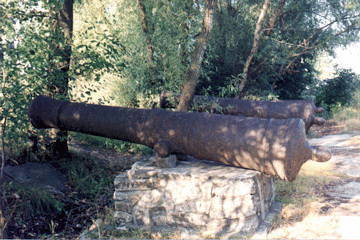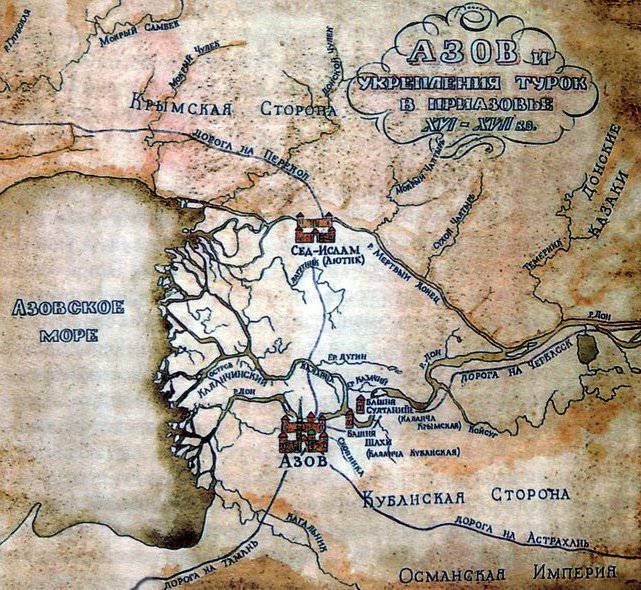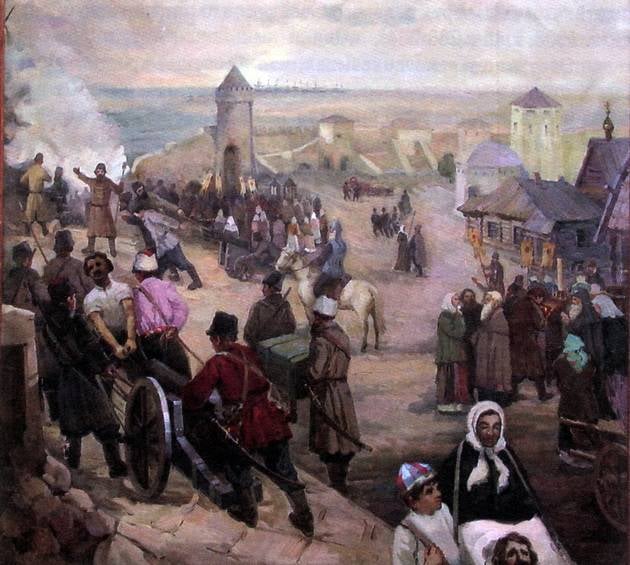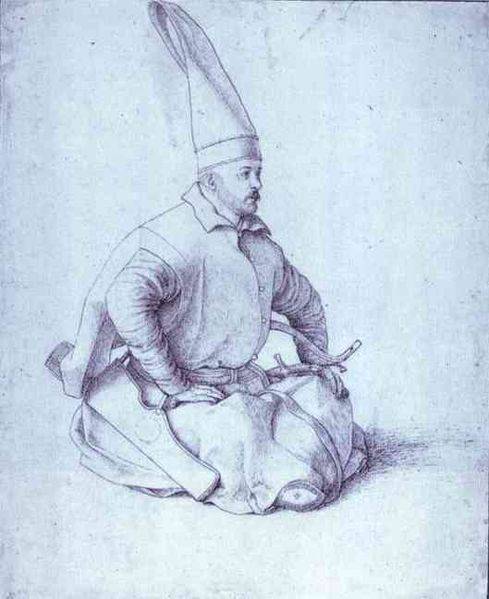The immortal feat of the Don and Zaporizhzhya Cossacks: Azov siege seat. Part of 1
 21 April (1 May) 1637, detachments of Don and Zaporizhzhya Cossacks, led by ataman Mikhail Ivanovich Tatarinov, blocked the Turkish fortress of Azov (garrison up to 4 thousand people with 200 guns) and after a two-month siege of 18 (28), the Armenians took over the attack in 2004. After that, they held the fortress to 1642 year. Thus began one of the pages of the glorious Russian. stories - so-called. Azov seat.
21 April (1 May) 1637, detachments of Don and Zaporizhzhya Cossacks, led by ataman Mikhail Ivanovich Tatarinov, blocked the Turkish fortress of Azov (garrison up to 4 thousand people with 200 guns) and after a two-month siege of 18 (28), the Armenians took over the attack in 2004. After that, they held the fortress to 1642 year. Thus began one of the pages of the glorious Russian. stories - so-called. Azov seat.Siege background
Since antiquity, the territory of Azov was considered a very profitable place for trade and communication with other lands. It was part of the Cimmerian state, more than two thousand years ago the Scythians founded their settlements here, then two settlements were founded on the territory of the modern city of Azov by the Greek-Meotian population: Paniardis (now this fortress in the center of the city) and Patarva (now this Podazovskoe settlement on western outskirts of the city of Azov). Then this territory was part of the Pontic kingdom, the lands of the Sarmatians, the Huns, the Khazars, and after the fall of the Khazars became part of the Russian Tmutarakan principality. In 1067, the city was finally subordinated to the Polovtsy and got its present name - Azov. In the XIII century, the Genoese merchants erected a stone fortress here, the city became the center of the slave trade Azov. Crimean Tatars and Nogai, who devastated the southern Russian lands, sold prisoners here.
After the Crimean Khanate became a vassal of the Ottoman Empire, Azov was turned into a powerful fortress on the left bank of the Don only 8 km from the sea: one part of the fortifications was located along the river, the other on the hill. The stone wall of the fortress on the Don side rose to 20 meters. The walls were surrounded by moats 8 m wide and 3,5 m deep, in addition, the fortress had powerful artillery weapons - 200 cannons on the 1200 m perimeter, all this made the fortress impregnable. The garrison consisted of 4 thousand janissaries (janissaries - the elite division of the Ottoman Empire, which was created mainly from Christian children taken from their parents using the so-called “blood tax”) and 1,5 thousand other warriors. The Turkish garrison had a great autonomy - food and gunpowder for a year.
The fortress became the outpost of the Ottoman Empire and a constant source of military threat to Russia. In addition, the fortress actually closed the Don Cossacks access to the Sea of Azov, and then the Black Sea to raid the shores of the Crimean Khanate and Turkey. The Cossacks with these campaigns solved two main goals: first, they freed the prisoners, delivered sensitive blows to the enemies; secondly, captured rich trophies. And now the Turks vigilantly watched over the Don waterway. In order to control the river, a triple iron chain with signal bells was stretched across the river, this chain was fixed on the coastal stone towers with cannons, so the Turks completely controlled the exit to the sea and could drown the violators with cross-framing fire. In addition, the barrier was insured by the fact that the fortress was always on duty galleys, armed with guns. True, the Cossacks were not completely bored and, it happened, managed to break through the barrier in thick fog or under the cover of a rainy night. The Turkish guards were harassed by letting down logs that were beating the chains, the Turks opened fire, and when the guard's vigilance was dulled, the Cossack detachments slipped under the chains with one throw.
But though the fortress did not completely stop the attacks of the Cossacks, it could still block their large detachments. As a result, in the winter of 1636, the Cossack Circle decided: “Go to Azov and fish for him!”. The messengers walked through the Cossack settlements, informing them of the message: “Prepare for war!” To go to Azov, 4,5, thousands of Donians, and 1, thousand Cossacks were gathered.

Capture of Azov
For the success of the operation, the plan of the Azov campaign was kept secret, but at the same time the Turkish ambassador, the Greek Thomas Thomas Cantacuzene, was passing through the Don to Moscow. The preparations of the Cossacks did not pass by his keen eyes, Azov Pasha was warned about the threat of attack, however, and the enemy did not escape from punishment - the Cossacks caught him and chopped him to pieces. When the Cossack army of 21 on April 1637 of the year went on the march, the Turks were already waiting for him: on the high walls of the fortress, teams of gunners stood on the prepared cannons with lit fuses. The Turks did not have the slightest doubt that the Cossack cavalry units with 4's falconets — small-caliber cannons that fired with pounder cores — never took a powerful stone fortress with first-class fortifications, excellent and brave infantry, numerous artillery and fair supplies of food, gunpowder , other ammunition for defense.
It was a standard for the enemies of Russia underestimation of military skill and ingenuity of our soldiers. After a two-month siege, the Cossacks brought a “mine” under the wall, blew it up; having broken into the fortress, the Cossacks, having lost 1100 people in this battle, ruthlessly exterminated the Turkish garrison and the inhabitants who had profited from the slave trade. At the same time they freed 2 thousand Russian slaves.
After the storming, the new owners of the city began a new peaceful life: the old temple of John the Baptist was consecrated again, peace was concluded with the Nogais, and trade relations were established with the cities of Kafa and Kerch. The Cossacks declared Azov a free Christian city.
Preparation of defense
It is clear that the Turks could not lower this - the Ottoman Empire was then a mighty empire in the prime of its power. However, at that time the Ottoman Empire because of the war with Iran (Iranian-Turkish war 1623-1639) could not send an army to return the fortress. Therefore, they sent their vassals - Krymchaks, already in January 1638, the Crimean Khan appeared under the fortress walls of Azov with 14 thousand horsemen, but having achieved nothing, he was forced to retire. Then he wanted to resolve the issue with the world - buy Cossacks, offering them compensation 40 thousand chervonets for leaving Azov. Cossacks refused.
Realizing that the decisive battle was inevitable, the Cossacks began to prepare him comprehensively, diplomatic and military: ambassadors were sent to Moscow, they asked the sovereign of all Russia, Mikhail Fedorovich (1613-1645) to take the free Azov. The king acted slyly, realizing that there was no strength to openly fight the mighty Ottoman Empire - Russia was ravaged by a long Time of Troubles and had not fully recovered, moreover, the difficult situation developed at the borders with the Polish-Lithuanian Commonwealth, said that he had not commanded to storm the fortress, and blamed the Cossacks for their self-righteousness, but at the same time Michael did not deprive the Don Cossacks of their usual favors. But the Turkish ambassador was informed that “Cossacks are free,” they fight at their own peril and risk, and if the Turkish sultan wishes, then he can calm them down.
There were serious military preparations, the military ataman Osip Petrov, who was the son of a Cossack of the Kaluga regiment, survived the Russian Troubles as a child, saw the ataman Bolotnikov himself, knew the techniques of his Kaluga 3 month defense and the defeat of the large army of the Moscow Tsar. It was Osip Petrov who developed the Azov protection system, having entrusted its technical implementation to the “arrived Cossack” and the mine specialist Magyar Yugan Asadov, who was already distinguished when the Cossacks captured Azov. The Cossacks raised shafts and walls, installed 250 cannons on them, dug up special underground structures - mine passages and “rumors”, they were designed to detect enemy tunnels, tours and log houses were made to cover future holes in the walls of the fortress, stockpiled food and ammunition. The standing garrison at first was small - only 1400 fighters, but after learning that the Turks were going, additional forces were drawn to the fortress. In total, the garrison, according to various estimates, was from 5,5 thousand to 8 thousand Cossacks, including the Cossacks, there were 800 women in the garrison. It was about a quarter of the forces of the entire Don Army, the remaining forces — about 15 thousand fighters — settled in the lower settlements along the Don in order not to let the Turkish forces up the river, attack its rear, as needed to replenish the garrison
In January, 1640, the Persian Shah Sefi (Persia was a state hostile to the Ottomans) sent his ambassador, Maratkan Mamedov, to Azov, offering allied assistance for the war with the Turks - 20 thousand soldiers. But the Cossacks refused.

Ottoman "Great Army"
As stated in the outstanding Russian literary monument of the XVII century, created by one of the participants of the Azov seat around 1641, in the "Tale of the Azov siege seat of Don Cossacks": "And the Turkish king was going to be exactly four years old, and on the fifth sent us four Azan plows under the Azov with their two colonels and the closest servant of his Ibreim the eunuch to oversee them, to watch how his commanders will operate under the Azov fortress. According to this historical source, the Turks gathered a huge army against the Cossacks, which would be enough to capture the whole country: 300 thousand soldiers from regular units, plus 100 thousand men of labor from the conquered lands of Asia Minor, Moldavia, Wallachia, Transylvania. A few tens of thousands, for fortification works, were overtaken from the surrounding lands. According to modern sources, the Turkish army was somewhat smaller - from 100 to 240 thousand, but still its size is impressive, a real invasion army. All against a very small garrison, the number of which was inferior to the Turkish forces, for each Cossack fighter (including women) accounted for enemy 12-36.
In the summer of 1641, a huge Turkish army under the command of Silistra serasker (commander-in-chief of Turkish troops) Delhi Hussein Pasha approached the fortress, the army was supported by the Turkish fleet of 45 galleys and 150 of other ships commanded by Piali Pasha. The Army was composed of: 20 thousand Janissaries and 20 thousand Sipahi (elite of the Turkish army - heavy cavalry, a kind of nobility of the Ottoman Empire), in 40 thousand horsemen led the Crimean and Nogai khans, the Caucasian feudal lords put 10 thousand fighters, 60.... thousand were recruited in the lands conquered by the Turks - among the Arabs, Persians, Kurds, Greeks, Serbs, Magyars, Bosnians (Serbs who converted to Islam), Moldovans, Romanians, etc. There were also mercenaries from Europeans, so the engineering corps of the Turkish army from 6 Thousands of siege masters consisted entirely of them. As the “Tale of the Azov Seat” says: “Yes, there were many German people in charge of those pashas who were in charge of taking cities and all sorts of military tricks on digging, attacks and nuclear equipment with fire” and then lists them in the Turkish army were Spaniards, Greeks, Italians, the Swedes, the French.
The Turks also prepared siege artillery: many thousands of horses dragged almost 130 heavy siege weapons with 1-2 pounds and about 675 smaller caliber guns, as well as more 30 incendiary mortars. The Turks, so that the Cossacks would not take the guns away during the raids (!), The guns in their positions were chained.
It is clear that the Turkish command was not going to finish the job only with the capture of Azov - it was the invading army, they planned not only to destroy the Cossacks in Azov, but also “completely transfer them to the Don”. Hussein Pasha believed that the city, faced with such superior forces, will fall in a few days. After that, the army will go to the Don, and then to Russia. The Cossacks understood this perfectly well. At this time, Azov became the point where the question was decided - whether to be a big invasion of Russia.
From the very beginning, the Turkish command and army were embarrassed, they already surrounded the city, when several hundred Zaporizhzhya Cossacks broke into the fortress on their gulls. They came under their banners, wearing festive clothes, playing music, two chieftains three times, in Russian, kissed each other. “Love, love!” Thundered in the fortress, the Turks were only amazed. These people came to die with their brothers, but they fulfilled this pledge of allegiance to each other.

Janissary officer. Drawing by Gentile Bellini (end of the 15th century)
To be continued
Information